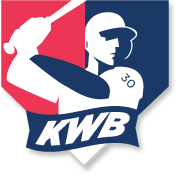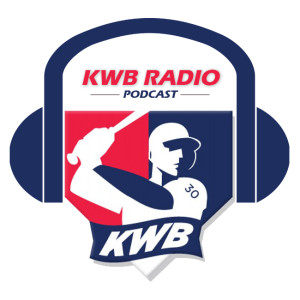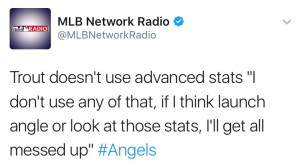With the Major League Baseball Draft recently completed, many players heard their name called. But what about those who waited by their TV’s, phones, tablets or computers for three straight days and never heard their names called?
Any person, in any walk of life, faces a number of circumstances throughout the course of their lifetime. Events and situations (not hearing your name called in the MLB Draft) can cause feelings of fear, doubt or depression. Players ultimately find themselves in a situation which forces them to make a decision – a decision that could completely change their outlook and their life. Even guys in the Big Leagues face challenges that can completely change their outlook. If you haven’t already, take a look at this conversation with an MLB All-Star when he was at a crossroads.
How many of you have been in a situation where you felt that you had no control of the environment around you? The MLB Draft is a great example of this. It’s an incredibly nerve-wracking experience as you wait by a piece of electronic equipment with the fate of your baseball career in the hands of someone you may, or may not, know. So many thoughts run through your mind as the draft unfolds, but what happens when you don’t hear your name called? How do you react?
Or better yet, how do you respond?
I like to remind players that how you respond to a situation can literally change the situation itself. Because the way you choose to interpret your experiences determines the way you live your life.
You worked so hard to get to a level in your career where scouts start to take notice. They start to know you by name and face. They start to spend a few minutes with you before or after your game. You learn their first, as well as their last names. You get the opportunity to fill out questionnaires. You start to feel like your dream of getting drafted into Major League Baseball, could actually become a reality.
Not just a hope.
Not a wish and a prayer.
A real thing.
But after sitting by the computer for three stressful days, your name is never called.
You are numb. The memories of your hard work, blood, sweat and tears race through your mind. The fog lays heavy in front of your eyes.
You can’t believe it. It was all for naught. What a waste of time.
That’s it.
It’s over.
How Will You Respond?
If you want to be a professional baseball player, this is the question you will need to ask yourself. Will you fill with anger? Will you blame the scout who said he loved the way you played? “If he loved me so much, why didn’t he draft me then?”
Or do you blame the system? “They don’t know what they are doing. They drafted a kid who barely played last year!” Or, “I hit .280 in the SEC, but they took a kid who hit .330 at a small DIII school in North Dakota?!”
If your name wasn’t called in the draft, what I’m about to tell you is not what you want to hear, but it’s what you need to hear. You are not responding. You are simply reacting to the event and its outcomes which didn’t play out in your favor. If you ever want to play this game professionally, you must stop reacting and start responding.
So when adversity knocks on the door, how will you respond?
Will you become soft and wallow in your pain and suffering? Will you be steadfast in your approach and be too proud to change or adapt? Or will you evaluate the situation and see it at face value, knowing that how you respond (your attitude) can literally change the situation itself?
Responding (instead of reacting) to not hearing your name called on draft day changes your current situation as well as your future. When you step back and view the draft situation from a third party lens, you begin to put the draft in its proper place. Through your eyes, it’s the most important and significant event in your life. But from someone just walking in on this particular chapter in your life, it’s just one experience in your overall journey in life.
Reflecting on this situation allows you to start creating a vision. You can see how many experiences are available just on the other side of the present. You learn that the obstacle (not being drafted) turns out to be your path; that in every wall, there is a door.
Stepping back and observing the scene before you take any action, requires practicing a key part of the process – patience. It’s something we all have the ability to do, but it’s also the hardest thing to implement. We live in a microwave society where patience is severely lacking, and we are more likely to be “first and wrong,” rather than be “last and right.” Practicing patience allows us to make the right decision for long run, rather than the right decision for now.
We don’t choose the experiences of failure and defeat in our lives. But we can choose how we respond to them. We are not responding to the event itself, rather, we are responding to how we interpret that event. This is how you turn defeats into triumphs.
Whatever challenge you may be facing today, take a step back, take a breath, then have the courage to respond to whatever stands in your way.
Remember, you are always in control.
Simply respond.
Love,
KW
For more than a decade, Kevin Wilson has been one of the most respected hitting coaches in the game. He works behind the scenes as a private hitting consultant to some of the best hitters in Major League Baseball. In 2013, Kevin was the hitting coach for the USA Baseball 18U National Team. Team USA beat Japan for the Gold medal at the IBAF World Cup in Taichung, Taiwan.
He is the author of the Amazon #1 Best Seller The #GoodBatting Book and co-hosts a popular podcast, KWB Radio, that showcases unique conversations with the pros. If you want Kevin to speak at your next event or if you want take advantage of his popular 2-day KWB Experience for players and coaches, contact Kevin today!
Follow Kevin on twitter @KWBaseball and visit his website KWBaseball.com




 And you don’t get to this place without being mindful and taking a moment to be grateful for where you are at, no matter how good or bad you’re doing on the field. Sometimes we think that we can only be grateful when things go well.
And you don’t get to this place without being mindful and taking a moment to be grateful for where you are at, no matter how good or bad you’re doing on the field. Sometimes we think that we can only be grateful when things go well.  gth.
gth.